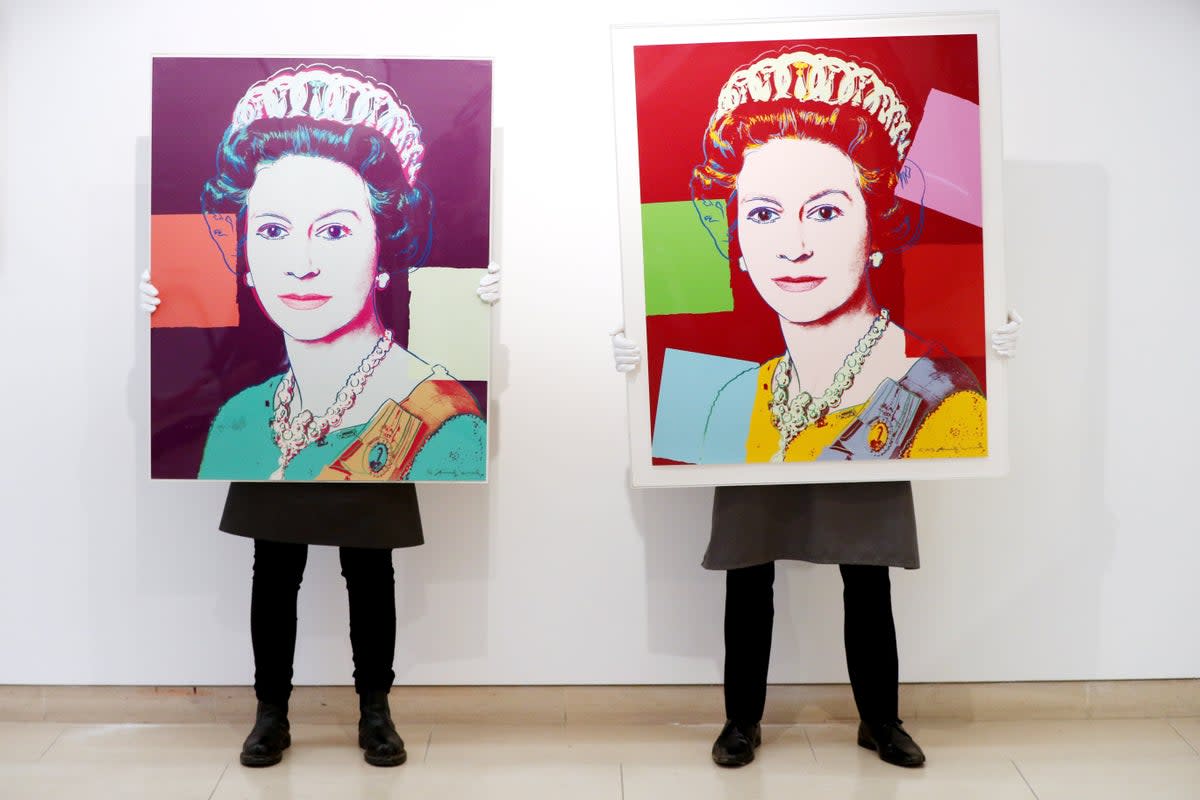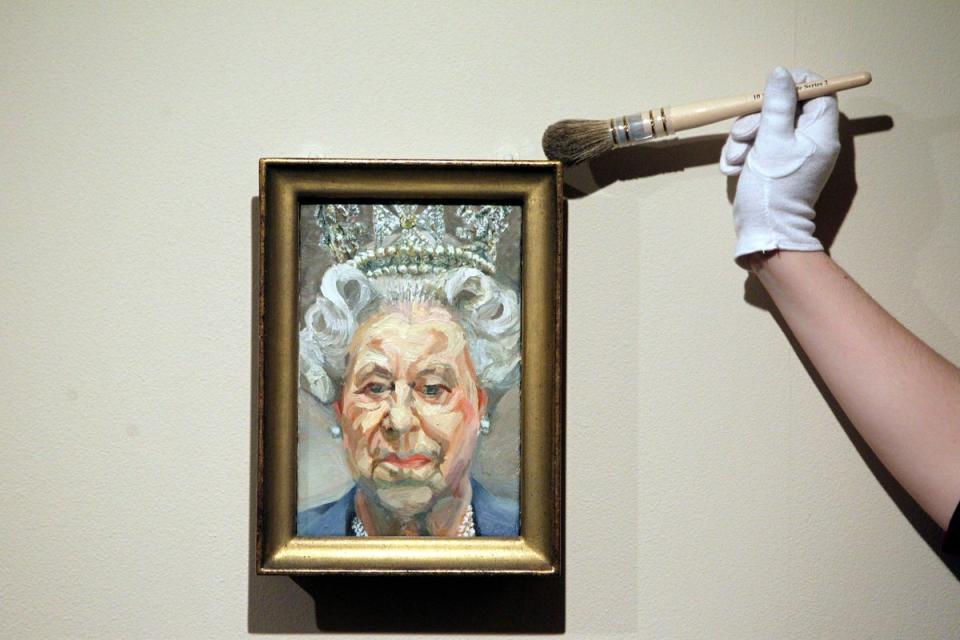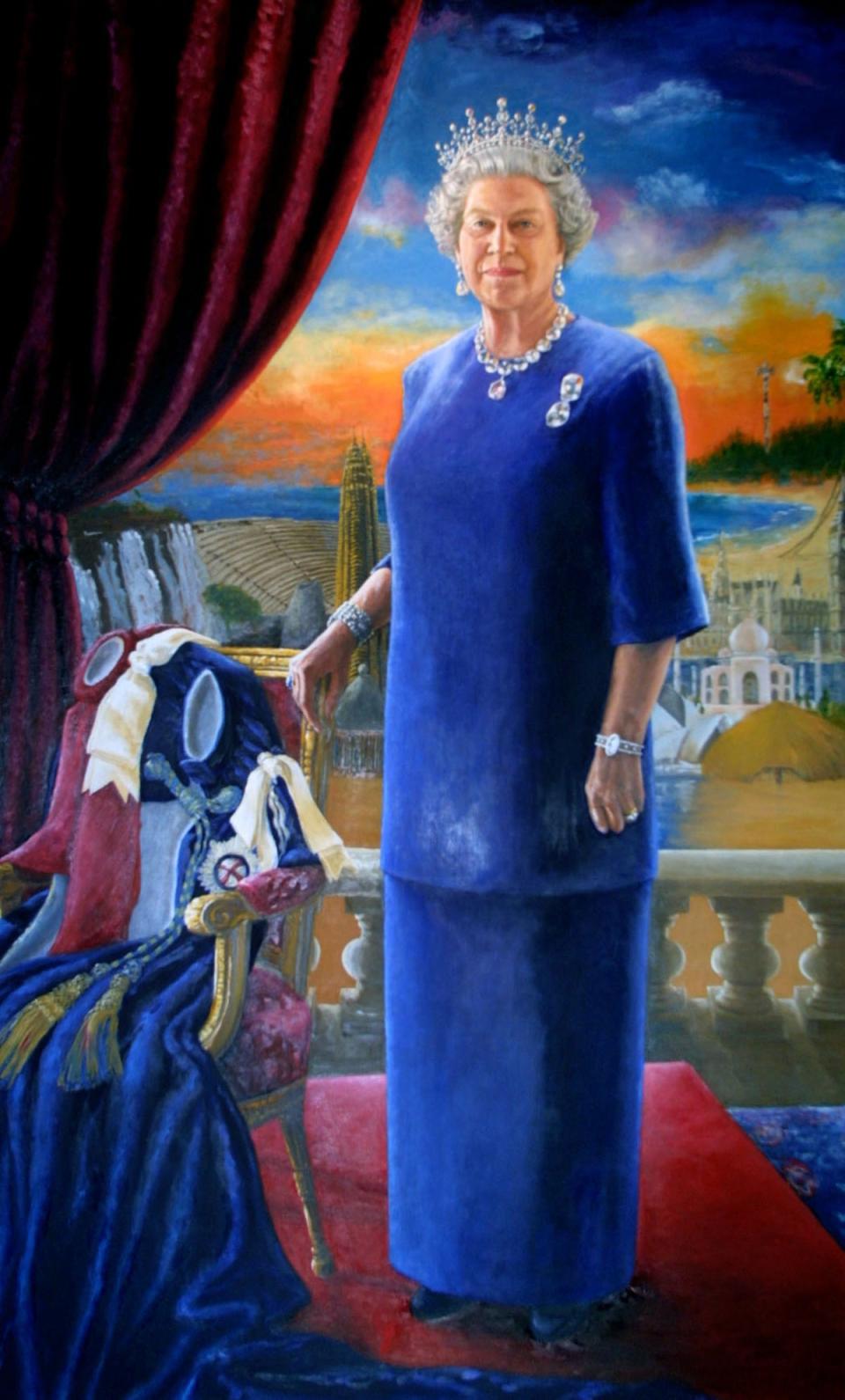From Lucian Freud to Andy Warhol: The artistic depictions of the Queen

The Queen has been a captivating subject for many artists, leading to the creation of a variety of memorable portraits throughout her 70-year reign.
From works by Andy Warhol to Lucian Freud, here is a look at some of the most significant artistic depictions of the late monarch.
Pietro Annigoni – Queen Elizabeth II (1955)

Italian artist Pietro Annigoni painted a number of portraits of the Queen throughout his life. His first, Queen Elizabeth II, was completed in 1955.
Annigoni, who died in 1988, opted for a Renaissance style of portraiture in contrast to the modernist and post-modernist styles that were most popular during his career in the mid to late 20th century.
The painting was commissioned by the Worshipful Company of Fishmongers and is displayed at its livery hall, Fishmongers’ Hall in London.
Annigoni later painted a second portrait of the Queen in 1969, which was commissioned by the National Portrait Gallery.
Arnold Machin – (1967)
Perhaps the most highly recognisable image of the Queen was created in 1967 by British sculptor and coin and postage stamp designer Arnold Machin.

In 1964, Machin was chosen to design a new image of Queen Elizabeth II for decimal coinage.
The portrait went on to be used on British postage stamps, with the design first being used on the 4d stamp issued in June 1967.
It has been used on all British definitive stamps – aside from more recent regional issues – since, and it is consequently thought that Machin’s design is one of the most reproduced works of art in history.
Andy Warhol – Queen Elizabeth II Of The United Kingdom (1985)
Although many of the most famous depictions of the Queen are traditional and regal portraits, American pop artist Andy Warhol used his iconic style of visual art to create one of the more colourful and eye-catching portraits of the Queen.

Warhol created Queen Elizabeth II Of The United Kingdom in 1985 as part of a portfolio titled Reigning Queens.
The original portfolio consisted of 16 prints made up of four images of each of the four female monarchs who were ruling in the world at the time of the portfolio’s publication: Queen Elizabeth II, Queen Beatrix of the Netherlands, Queen Margrethe II of Denmark and Queen Ntombi Twala of Swaziland.
Warhol created his portrait of the Queen using a photograph taken in 1977 for her Silver Jubilee.
Michael Leonard – Queen Elizabeth II (1985-6)
Michael Leonard created his depiction of the Queen between 1985 and 1986, portraying her in a bright yellow outfit accompanied by one of her loyal corgis.
The portrait was commissioned by Reader’s Digest magazine to mark the Queen’s 60th birthday.
Susan Ryder – Her Majesty The Queen (1997)
Susan Ryder painted the Queen over the course of four sittings in the Yellow Drawing Room at Buckingham Palace.

The portrait was commissioned by the Royal Automobile Club to celebrate its centenary in 1997 and currently hangs in the club’s London headquarters, to be viewed only by its members and their guests.
Justin Mortimer – The Queen (1997)
One of the more abstract depictions of the Queen was created by English painter Justin Mortimer and officially unveiled in 1998.
The portrait, which has a striking yellow background in reference to the Yellow Drawing Room at Buckingham Palace where the Queen often sat for portraits, sees the Queen’s head detached from her body.
It was commissioned by the Royal Society of the Arts to mark its 50th anniversary of association with the Queen, and hangs in its headquarters.

Lucian Freud – Her Majesty the Queen (2000-1)
A portrait of the Queen which provoked mixed reactions after its unveiling was Lucian Freud’s depiction, which was personally presented to the Queen by Freud in 2002.
The painting, which is only eight inches high, is a close-up interpretation of the Queen’s face created using thick brushstrokes.
Chinwe Chukwuogo-Roy – Queen Elizabeth II (2002)
To mark the Queen’s Golden Jubilee in 2002, Nigerian-born artist Chinwe Chukwuogo-Roy captured the Queen wearing a blue dress with an array of jewellery, including a diamond broach, necklace and tiara.

In the portrait the Queen is positioned in front of a composition of landmarks from Commonwealth countries, including India’s Taj Mahal, Jamaica’s Montego Bay and Australia’s Sydney Opera House.
Chris Levine – Lightness Of Being (2004)
Chris Levine’s portrait of the Queen, titled the Lightness Of Being, was commissioned by the Jersey Heritage Trust in 2004.
Levine created the portrait using a complex 360 degree camera system and captured the Queen with her eyes closed, portraying a calm and serene moment.

Nicky Philipps – HM Queen Elizabeth II (2018)
One of the most recent portraits of the Queen was painted by Nicky Philipps in 2018, after being commissioned by The Royal Company of Archers to mark the Queen’s 90th birthday.
The painting, which was completed from original sketches worked on in Buckingham Palace, was unveiled at The Archers’ Hall in Edinburgh.

 Yahoo News
Yahoo News 
